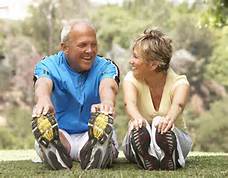One misconception about fitness over 50 is that it is limited to physical fitness. Fitness over 50 is more than just being physically fit. I mean that we need to recognize that there’s a mind, body, and spirit connection; how we feel physically influences how we feel emotionally and how we perform mentally. On the other hand, our mental and emotional fitness strongly impacts our ability to execute physically.
To give you some examples, most people either know or have experienced a situation where a missed putt on one hole totally sabotages the entire round of golf. Or being mentally drained and then trying to perform complex and demanding mental activities for work.
Another example is how good you feel after a great workout where your body is pumped with endorphins, and you feel energized. That is one reason why exercise and nutrition are as effective in treating depression as most medications.
When we think of our fitness, we should consider our physical, mental, and emotional fitness. All three aspects are all tied together. One can influence the other. I interviewed several trendsetters who focused on training the brain and mental fitness, including Inna Khazan, Ph.D., Marvin Berman, Ph.D., and Lawrence Klein. Mental wellness is an essential topic for people over 50 because their two greatest fears are falling and losing their mental faculties.
I interviewed Eric Pepper, Ph. D., a professor at San Francisco State University, and he helps his clients improve both mental and physical performance using biofeedback. One of his success stories was Jo Aito, a 47-year-old female weightlifter, preparing to compete in a world championship. His goal was to use mental training to help her achieve a personal best and world record. He worked with Jo on her breathing, muscle relaxation, visualization, and mental rehearsal using biofeedback. After six months of training with Eric, Jo did achieve her personal best and set a world record. She did it at the age of 47.
Another example of how the brain and body are interrelated is an interview with Cathi Lamberti, CEO of SMARTfit, Inc. They have a product line that promotes neuroplasticity by incorporating a brand of functional training that uses various activities that focus on the core/torso, agility, speed, balance, flexibility, power, and strength while simultaneously developing high levels of neuromuscular efficiency. This process of engaging the hands, feet, ears, and eyes develops eye-hand and visual-perceptual motor skills.
SMARTfit training provides this level of stimulation and enables individuals to merge the mental and the physical while continually encouraging higher levels of accomplishment, which pushes demands on the neurological system to rewire itself more efficiently. Regular use improves the level at which the mind and body function competently together.
High-performing athletes, as well as baby boomers who want to stay physically and mentally fit, are currently using their products.

